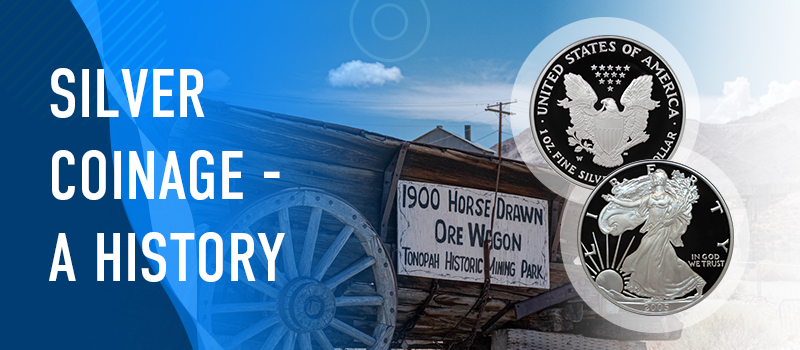Silver Coinage – A history

Silver was synonymous with money in the ancient world. The reason was, it was rare enough to have its’ own value. It was easily transportable, durable and divisible into smaller units. It did not lose its’ value when melted and could be shaped into bars or coins easily.
Silver coinage in the ‘Old World’
In Egypt, around 2500 BC Silver was rarer than Gold. It was considered so noble that they cast the bones of their gods in Silver and draped sheets of Gold as the skin. In other parts of the World, Silver wasn’t as rare as Gold, and this made it almost perfect for usage in smaller denomination coins. But it was only around 564 BC, that Lydian’s from Lydia or Anatolia (modern day Turkey) started using the naturally occurring alloy of Gold and Silver, Electrum as coins. Around the same time, ancient Greeks found Silver in abundance in Athens and minted them into coins called the drachma. Each city-state had its own standard for the proper weight of the coin.
In 4th century BC, Macedonia dominated Greece and the drachma became the currency of choice in the Macedonian empire. When the empire fell, it broke into multiple kingdoms and these were minting drachmas as far away as Egypt and Central Asia. The Roman empire came up in the 3rd century BC and their coins were in the beginning Silver drachms. After becoming a huge empire, the Romans probably thought they ought to have a new coin and the Silver Denarius became their primary coin. The Parthians and then later the Sassanians of Persia also minted Silver drachms around the 2nd century BC.
In the middle ages, the Byzantine empire discontinued the drachms and used bronze and gold for their coins. The Arabian Peninsula in 6th century AD started issuing the Arabic dirhems closely related to the Persian drachms. In medieval England, Netherlands and Frisian (part German) region, the Silver sceattas became popular for trade. But the Silver penny came into usage soon after. It was called pfening in Germany and penning in Scandinavian countries.
In the early modern period, Ottomans minted small Silver coins called the akçes. The Indian Mughal emperors were minting Silver coins called the rūpyakam meaning ‘wrought silver’. At around the 16th century, Silver was discovered in Joachimsthal in modern day Czech Republic. The coins minted from the Silver from this town came to be called thaler. In Dutch it was daalder or daler and is the etymological origin of the currency name "dollar"!
Silver coinage in Spanish America
When the ‘New World’ was discovered by the Spanish, new places abundant in Silver were discovered. It kept Spain ahead in the Silver race for nearly 300 years. They discovered Silver in Mexico, Peru and Bolivia. The mints in Mexico and Peru minted Spanish Silver dollars of high quality. They entered European markets and soon became the international currency of choice. The Spanish crown became immensely rich and the Spanish dollar also called the peso became the standard for most currencies across the world then because of its uniformity and milling characteristics.
Silver coinage in U.S.A.
For almost 100 years the Spanish dollars were allowed in the United States of America as currency alongside the American dollar. The U.S. mint released Silver coins with the denominations of half dime, dime, quarter and dollar. After the gold rush that pulled all kinds of men and nationalities to the west, the Comstock Lode was discovered in 1859. This spurred the creation of the Carson City Mint in Carson City, Nevada that released many coins including the popular Morgan Silver dollar.
The Comstock Lode spurred the economic growth of Nevada and to some extent San Francisco. It initiated the need for a mint that can help process the huge amount of Silver coming out of the mines. The Lode also helped advances in mining technology. Many districts sprung up in Nevada because of the Silver ore mining industry. The last great Silver mining district to be developed in Nevada was Tonopah, in Nye County, discovered in 1900.
Silver Bullion of U.S.A
The U.S. mint releases the American Eagle and the America the Beautiful quarters as the country’s Silver Bullion. The bullion coins are priced based on the market price of the metal. The modern U.S. mint now releases coins for collectors, for legal tender and for investment called the bullion. The bullion coins can also be used as legal tender.
This entry was posted in General on April 15, 2020 by lavanya kannan

Leave a comment